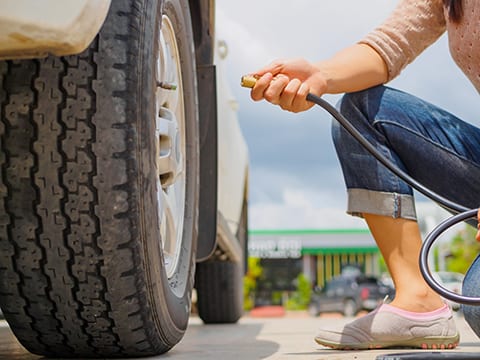 As more cars and tires are being sold in the Reno area with nitrogen in them, more drivers are beginning to ask, “can I add air to my nitrogen tires?” The short answer is yes, but there are some benefits to keeping your nitrogen filled tires topped off with only nitrogen.
As more cars and tires are being sold in the Reno area with nitrogen in them, more drivers are beginning to ask, “can I add air to my nitrogen tires?” The short answer is yes, but there are some benefits to keeping your nitrogen filled tires topped off with only nitrogen.
Air is approximately 78% nitrogen (N2) 21% oxygen (O2), and 1% other gasses to begin with. The first benefit is nitrogen is “clean”. When a tire is filled 95-99% nitrogen it has virtually no moisture in it. Tire pressure changes with temperature, the more moisture in the air the greater the changes. For every 10 Fahrenheit change, nitrogen and “clean” or dehumidified air will change by one psi (pound per square inch). Air with moisture in it will change pressure even more. Moisture can also corrode the valve stem, tire pressure sensor, and even the wheel itself for tubeless tires. Even in Reno, most compressors are not equipped to dehumidify the air they take in.
Temperature is not the only thing which causes changes in tire pressure. Over time gasses leak out of a tire through a process called permeation. Air permeates through a tire 1.6 times faster than pure nitrogen, though it is still only about 1 pound a month. Permeation rates differ between tire brands, but the friendly service professionals at Wayne’s Automotive Center recommend you check your tire pressure once a week. Easier to catch small leaks before they start causing trouble.
The average Reno driver is not going to notice much if any difference between nitrogen filled and air filled tires. If you like to take your car to the track and time your laps, then you might notice a difference.
Nitrogen does have a fire safety advantage because it is inert. Whereas oxygen readily supports combustion.
Topping a nitrogen filled tire off with air is not going to hurt it. Since the tire is already moisture free any moister carried in by air will be negligible. Unless you can get it for free or close to it, topping off a nitrogen filled tire with more nitrogen is seldom worth the cost.

